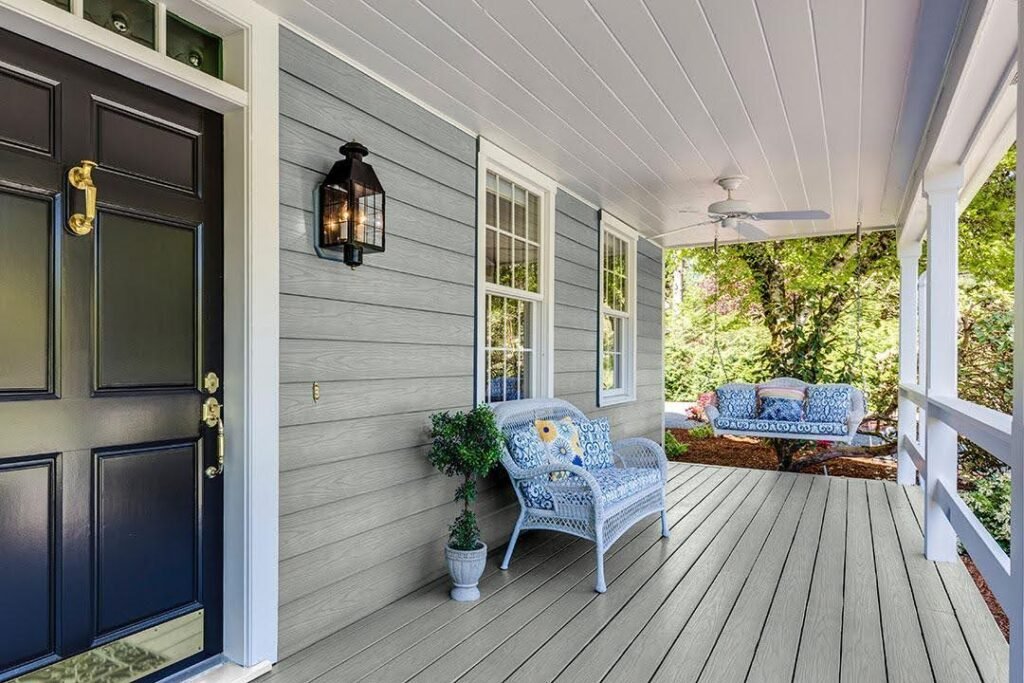As a homeowner, you’re constantly faced with decisions that can significantly impact your home’s durability and aesthetic appeal. One such decision is choosing between composite and traditional cladding. But how do you decide which one’s right for you?
Understanding Cladding Materials
Let’s dive right into the heart of our topic – cladding materials. We’re examining two main types here: composite and traditional. Composite cladding, a modern choice, offers a blend of recycled wood and plastic. This combination results in a highly durable material that stands up to weather conditions and resists fading or staining.
On the other side of this comparison, we’ve got traditional cladding materials like timber or stone. These natural options have been used for centuries due to their strength and aesthetic appeal. However, they demand regular maintenance to retain their quality over time.
In the next sections, I’ll break down each type further, detailing their advantages and drawbacks. Through this direct comparison, you’ll gain knowledge essential for making an informed decision about your home’s exterior finishing.
Composite Cladding
Let’s delve deeper into the world of composite cladding, a popular choice for modern homes.
Composition and Features
Composite cladding is a mix of recycled wood and plastic. This blend makes it a durable, weather-resistant option for home exteriors. It’s engineered to withstand harsh conditions without losing its aesthetic appeal. Unlike traditional materials, it doesn’t require frequent maintenance or treatment to keep up its appearance and performance.
Advantages
There are numerous benefits associated with composite cladding:
- Durability: Being made from a combination of wood and plastic, it possesses an impressive lifespan.
- Low Maintenance: It doesn’t need regular upkeep like painting or staining.
- Resistance to Weather Conditions: The material can withstand extreme temperatures, rain, wind, and snow.
- Eco-Friendly: Since it uses recycled materials in its manufacture, choosing composite cladding contributes towards reducing waste.
Disadvantages
However, every coin has two sides; here are some potential drawbacks you might want to consider before opting for composite cladding:
- Cost: Compared to traditional options like timber or stone, this material tends to be more expensive upfront.
- Less Natural Look: While manufacturers work hard to mimic natural textures and colors as closely as possible, some homeowners find that it just doesn’t match up to the real thing.
- Potential Color Fade: Over time due to sun exposure, the color might fade slightly which could affect the overall look of your home exterior.
Traditional Cladding Materials
With the basics of composite cladding covered, let’s shift our focus to traditional cladding materials. Diverse and versatile, these materials have graced home exteriors for centuries.
Common Types
Traditional cladding comes in a variety of types. Here are some common ones:
- Wood: A classic choice known for its natural beauty. Cedar and pine are popular examples.
- Brick: Renowned for its strength and durability, brick offers an ageless aesthetic.
- Stone: An epitome of luxury, stone provides unmatched elegance with varieties like granite or limestone.
- Metal: Aluminum and steel are often used for their modern appeal and fire resistance.
Advantages
Traditional cladding materials possess several advantages:
- They offer a natural look. Wood, brick, and stone enhance curb appeal with their organic textures.
- There’s a wide range of options available in terms of color, style, texture which allows homeowners to customize their exterior as per their liking.
- Many traditional materials like brick and stone boast impressive longevity if properly maintained.
- The need for regular maintenance is one major downside – wood requires sealing to prevent rot while metal can corrode over time.
- Installation cost can be higher compared to composite cladding particularly in case of premium materials such as stone.
- Some traditional materials may not fare well under extreme weather conditions unlike composite claddings whose blend makes them weather-resistant.
Disadvantages
Traditional cladding materials possess several disadvantages.
- Requires regular maintenance and repairs, which can be costly and time-consuming.
- Some types may not be environmentally friendly or energy-efficient, impacting overall sustainability.
- Susceptible to weather damage, requiring more frequent upkeep to maintain appearance and functionality.
Composite vs. Traditional Cladding
Let’s dive deeper into the comparison between composite and traditional cladding, focusing on cost, durability, environmental impact, aesthetics, and installation customization.
| Category | Composite Cladding | Traditional Cladding |
| Cost Comparison | Higher initial cost but low maintenance offsets over time | Lower initial cost but higher long-term costs due to frequent repairs and upkeep |
| Durability and Maintenance | Excellent durability; resists wear-and-tear from weather elements; low maintenance (simple wash-down) | Requires regular attention; wood needs periodic staining/painting; bricks might need repointing |
| Environmental Impact | Made from recycled wood fibers and plastic waste; helps reduce landfill waste | Varies; brick production is energy-intensive; metal extraction can harm natural habitats |
| Aesthetic Considerations | Modern technologies mimic natural textures; provides visual appeal | Offers classic aesthetic; rustic charm of wood; timeless elegance of stone facades |
| Installation and Customization | Lightweight and easy to install, reducing labor costs; flexible customization with an array of colors to match home design preferences | Heavier materials like brick or stone require professional masons for proper installation |
Conclusion
In conclusion, deciding between composite and traditional cladding for your home involves balancing various factors like cost, durability, maintenance, environmental impact, and aesthetics. Composite cladding, with its higher initial cost, offers long-term savings through low maintenance and exceptional durability, along with eco-friendly benefits. Traditional cladding materials like wood, stone, and brick provide a timeless and natural appeal but require regular upkeep and can be more susceptible to weather damage. Ultimately, the best choice depends on your priorities: if you value low maintenance and environmental benefits, composite cladding might be your ideal option, whereas if you prefer a classic look and are willing to invest in regular maintenance, traditional cladding could be the way to go.



